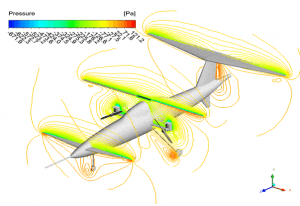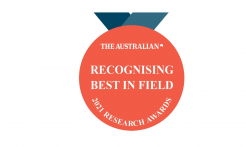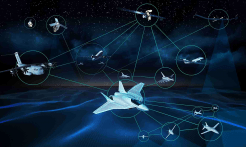Within the scope of this project, several important models and results were developed and delivered to STOPROTOR as part of three comprehensive research reports, including: the complete 6-DoF model for fixed-wing configuration, a preliminary analysis of the main performance parameters associated with the rotary wing configuration and several fundamental experimental results. The experiments allowed to determine the aerodynamic characteristics of the 6-DoF model with an adequate accuracy and the numerical and experimental results were closely correlated, validating the individual values. The maximum range and endurance performances were also estimated and the thrust and drag requirements were determined for a set of operational conditions. To support a safe powerless landing, autorotation characteristics were also determined.
A custom Flight Test Instrumentation (FTI) was developed to support several experimental flight test activities and is now available at RMIT for all future research undertakings. In particular, the airborne component consists of a Data Acquisition Unit (DAU) containing an MTi-30-AHRS-2A5G4-DK Inertial Measurement Unit, a Teensy 3.2 32Bit processor with USB microprocessor, a NEO-7P PPP Global Positioning System (GPS) receiver with Electro-Magnetic Interference (EMI) protection as well as HM C5983 pro version I2C magnetometer. Additionally, an electronic Flight Control System (FCS) was designed and assembled, consisting in a PixHawk 1.0 unit supporting a Proportional/Integral/Derivative (PID) controller and ArduPilot 2.0/ArduCopter 3.4 software to drive all motors and actuators. In terms of publications, although dissemination activities are still ongoing, a full-length refereed paper was presented at the 17th Australian International Aerospace Congress (AIAC17), held in Melbourne at the end of February 2017. This AIAC17 conference paper was recipient of a Best Paper Award in the Aircraft Design Category, corroborating the high impact of this research project. A full-length research article is being developed for the prestigious Aerospace Science and Technology journal. Further journal submissions are also being considered in coordination with STOPROTOR Unmanned Aerial Systems Pty Ltd. Additionally, partly as a result of the impact generated during the research collaboration with RMIT University, STOPROTOR was conferred the prestigious Best Innovation – Aerospace Award at the Avalon Airshow 2017. In February 2017, the global accelerator MassChallenge has named StopRotor Unmanned Aerial Systems in its top five highest-impact, highest-potential startups in the final round of its Bridge to MassChallenge Australia competition. The five finalists went on to take part in the MassChallenge accelerator program internationally.
A grant application leveraging on this research was submitted by a consortium composed by STOPROTOR UAS Pty Ltd., GNC Pty Ltd., and RMIT University to the Defence Innovation Hub (DIH) grant scheme – Exploration Phase and was successfully awarded. The DIH Exploration Phase will address the Guidance, Navigation and Control (GNC) developments for the STOPROTOR platform, with a focus on the FCS and on the further experimental activities required for its tuning. The prestigious Best Innovation – Aerospace Award conferred at the Avalon Airshow 2017 and the Best Paper Award conferred at AIAC17 provided significant exposure to STOPROTOR Unmanned Aerial Systems Pty Ltd., which is being highly instrumental in attracting interest on the platform for further Research, Development, Test and Evaluation (RDT&E), initiating contacts with potential investors and facilitating the marketization activities. The numerical and experimental results obtained during the project provide valuable insights on the STOPROTOR design and are currently driving several platform design evolutions. In particular, the results of this research are now supporting a planned scale-up of the platform and the development of an advanced FCS to properly address the fixed/rotary-wing transition challenges as well as tackling the aerodynamics, vibration and several other factors affecting the control responses of the aircraft. Further interest from the Australian Defence Forces and from the national/international aerospace, defence and aviation industries is anticipated based on the results of the DIH RDT&E activities planned for 2018-2019.






